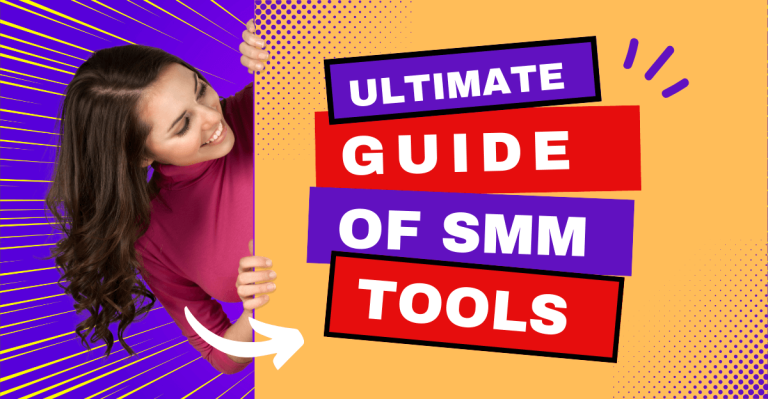How to start your first Online Business? This is the question that plagues many people. And because we all know that every beginning is difficult, in this complete guide we will show you all the steps you need to take to have a successful and profitable online business.
How to start your first online business?
Starting an online business is not just a new opportunity, but a strategy that can transform your business future. Technological advances and the rise of e-commerce have created the ideal environment for any entrepreneur, whether they are experienced or just starting out. In this guide, I will help you design and implement your own online store, utilizing cost-effective solutions and modern marketing strategies.

Introduction: Why Start an Online Business Today
The value of e-commerce
In Greece, the e-commerce sector has seen explosive growth in recent years, especially after the pandemic. Many small businesses, which didn't even have a physical store, have seen their sales skyrocket thanks to a well-designed e-store. The ability to reach a global audience and provide products 24/7 is huge. Whether it's selling physical products, digital products, or even services, e-commerce offers tremendous room for growth.
The right time to start
2024 is an ideal year to start an online business for a number of reasons related to technological advances, changes in consumer behaviour and new business opportunities. Let's take a closer look at why:

- Rapid rise of e-commerce: In recent years, e-commerce has experienced explosive growth, with the pandemic accelerating this trend. In 2024, consumers are now more familiar with online shopping and prefer the convenience offered by online stores. This trend shows no signs of slowing down. In fact, further growth is expected, with more and more consumers turning exclusively to online shopping.
- Access to modern tools and technologies: It has never been easier and more cost-effective to start an online business. Modern technologies and platforms such as WooCommerce, Shopify, and digital marketing tools like Klaviyo and Google Ads offer entrepreneurs the means to create professional e-shops and manage their business with ease. These platforms are designed to be user-friendly and require minimal technical knowledge, meaning that even beginners can get started quickly and efficiently.
- Lower start-up costs: Compared to traditional businesses, e-commerce has much lower start-up costs. No need to invest in a physical store, rent or large stocks of products. With models like dropshipping or selling digital products, you can start with a low budget and scale your business gradually.
- Increase in online shoppers: Consumers of 2024 are now digital par excellence. This means they prefer to research, compare products and ultimately buy online. This trend affects not only younger people, but also older age groups who have adapted to the digital market over the last few years. This expanded consumer base gives you the opportunity to target larger and more diverse audiences.
- Evolution of digital marketing: By 2024, digital marketing has evolved to levels that allow for highly targeted campaigns that can deliver big results even with low budgets. Tools such as SEO, Google Ads, and the Facebook Ads have been improved, offering more monitoring and optimisation possibilities for small businesses. Email marketing, through specialized platforms like Klaviyo, allows you to maintain personal contact with your customers and increase sales at minimal cost.
- Global clientele: An online business is not limited to the local market. In 2024, it's easier than ever to reach international markets through strategies such as international SEO, selling via global platforms such as Amazon and eBay, and using tools for multilingual e-shops. This opens up huge opportunities for entrepreneurs who want to target consumers from other countries.
Your introduction to the world of e-commerce does not require large sums of money, but it does require the right strategies, patience and perseverance. So let's move on to the first critical pillar of success: choosing the right product.
Step 1: Product or service selection
The importance of the right choice
Choosing the right product is the cornerstone of your online business. If there is no demand for what you are offering or if the market is already saturated, then you are likely to struggle to make sales. Therefore, the product selection process should be based on market research and trend analysis.
How to choose the right product
Choosing the right product is one of the most critical steps to the success of your online business. Your product must meet a specific market need, be competitive and allow you to achieve the profit margins you need to grow your business. Let's take a detailed look at the key steps you need to follow to make the best possible choice.
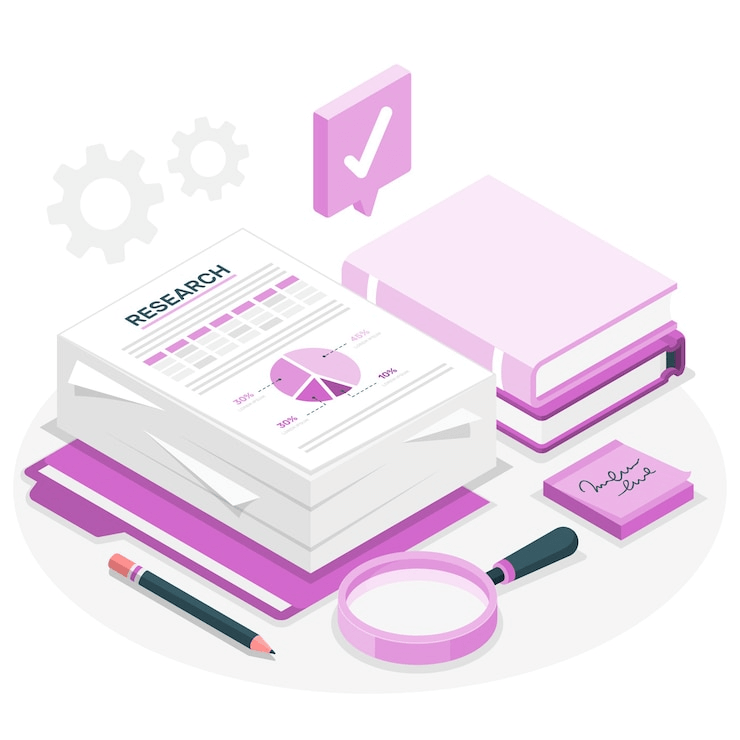
- Market Research: Start with the competitive analysis. Who are the key players in the market you are interested in and what do they offer? How are their products priced? What is the quality of their products and the ratings they receive?
- Competition analysis: see who your competitors are and what products they offer. Consider the pros and cons of their products, customer reviews, and their pricing policy. Is there room to introduce a better or differentiated product?
- Trend analysis: Use tools such as the Google Trends, Amazon Best Sellers, or the Etsy to see which products are popular and which ones people are searching for. Look for trends that are rising and products with increasing demand.
- Communities and Forums: Explore online communities and forums related to the subject you are interested in. Consumers often talk about their needs and products of interest in communities like Reddit, Quora, or niche groups on Facebook.
- Assessment of demand and competition: Once you have an idea of the products available in the market, you need to evaluate the competitiveness of your product and if there is a real demand. There are two main factors to consider:
- Request: The demand for a product determines how often people seek or buy it. Use tools like. Google Keyword Planner or the Ubersuggest to check the volume of searches for the products you are considering selling.
- Competition: Consider whether there is a lot of competition in the market you are interested in. If your competitors are e-commerce giants like Amazon or Skroutz, it may be difficult to compete directly with them. Look for products with high demand but moderate competition, or focus on niches where you can excel.
- Analyse costs and profit margins. Before you decide on your final product, calculate the production costs, the management accounting, and the profit margin. Can you remain competitive in the market and make a profit? Here are some ways to do that:
- Product cost: Calculate all costs, such as purchase costs from the supplier, transport, logistics and any returns. If you are selling digital products, calculate the cost of initial development.
- Pricing: Compare the selling price with your competitors and make sure there is enough profit margin.
- Profit margin: Your goal is to have a net profit margin that will not only cover your operating costs but also leave room for investment in marketing and growth.
- Choose niche markets. Often, the best strategy for beginners is to target niche markets (niches) where there is less competition but where there is a specific demand. A niche market may be for a particular product or a particular type of customer that is not well served by the major players. Examples of such niches are:
- Sustainable development products (e.g., green products, recycled products).
- Specialised hobbies (e.g., DIY products, art supplies).
- Personalised products (e.g., handmade items, personalised gifts).
Physical vs digital products
The main difference between the of course and digital products is their nature and the way they are managed:
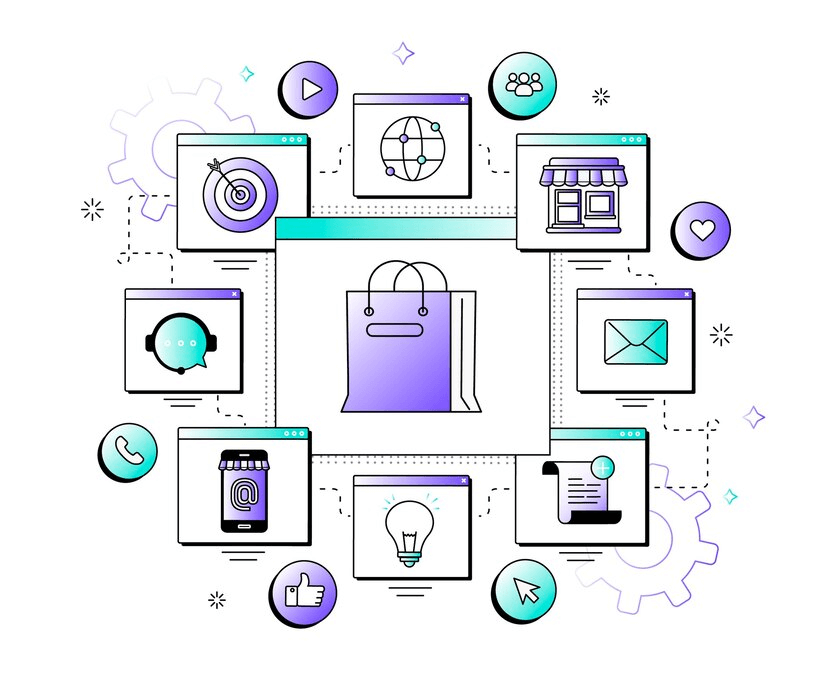
- Natural products: If you choose physical products, you will need to consider issues such as storage, inventory management, shipping, and working with suppliers. Natural product also has the advantage that it can build stronger brand awareness if you invest in quality materials and packaging.
- Advantages:
- Consumers often feel more comfortable to buy natural products, as they have tangible value.
- You can be easily diversified through the quality, packaging, or uniqueness of your product.
- You have the possibility to manufacture the product yourself yourself or work with a manufacturer.
- Disadvantages:
- Required additional costs for storage, packaging, and shipping.
- There are inventory management issues and logistics to consider
- Advantages:
- Digital products: Digital products, on the other hand, have no shipping costs and you can sell them an unlimited number of times without additional production costs. This makes them great for businesses that want to get started without a lot of upfront capital. Examples of digital products are eBooks, online courses and software.
- Advantages:
- No need for storage nor stock management.
- You can sell them an unlimited number of times without additional production costs.
- Ideal for global market, as they do not require shipping.
- Disadvantages:
- Ο competition can be High in digital products such as eBooks or courses.
- Needed more creative work and an initial investment in time to develop your product (e.g., content creation, software).
- Advantages:
Test your product on the market
Before you invest fully in your product, test it in the market with small batches or promotions, and see how customers respond. You can use marketing activities such as ads on Google and Facebook together with Instagram to run test campaigns and see which products have the best response. This way you can run product tests and see how well they respond. minimise risk and invest in products that are proven to be viable.
Dropshipping: an economical solution
To be clear, dropshipping is a cost-effective solution for starting an online business because it eliminates some of the larger expenses that come with traditional retail business. In a dropshipping model, you don't have to maintain inventory, manage warehouses, or pay for products upfront. This makes it ideal for new entrepreneurs on a limited budget. Let's take a closer look at why dropshipping is considered a cost-effective solution:
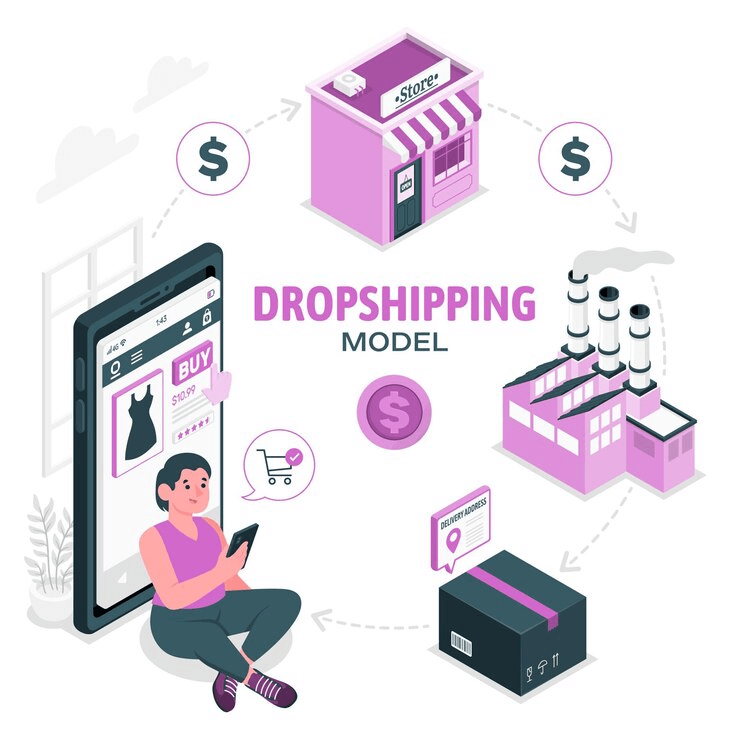
- Without stocks of products. Unlike traditional businesses, where you have to buy products in advance and store them, in dropshipping:
- No need to buy products before they are sold. This means that you only pay the supplier when the customer buys the product. You avoid getting stuck with unused stock or investing in products that may not sell.
- You minimise the risk commit to products that may not be in demand.
- No Storage and Inventory Management Costs. Managing inventory, warehouses and shipments is a significant cost for traditional businesses. In the dropshipping model:
- The supplier is responsible for for the storage of products and their shipment directly to the customer. You don't need a warehouse or staff to manage stock and orders.
- This means that save money on administration costs, such as warehouse rent, labour costs and accounting costs for inventory tracking.
- Low Starting Capital. Dropshipping allows you to start your online business with minimum capital. You can set up your store, choose the products you want to sell, and start promoting them without having to invest thousands of euros in stock or infrastructure:
- Low initial risk: You need not worry about immediate capital losses if your products do not sell quickly, as you are not financially committed to large stocks.
- Multiple Product Options. With dropshipping, you can try different products without being financially committed. If you want to add new products to your store or change your product strategy, you can do it easily:
- Without having to buy stock in advance.
- This gives you the flexibility to adapt your offer according to market changes and customer needs.
- Simplified Supply Chain Management. Traditional supply chain management (logistics) involves many processes, such as ordering products, storing them, managing inventory, packaging and shipping them to customers. All of these require resources, time and money:
- In dropshipping, the supplier takes over the management of the supply chain. This means you don't have to worry about issues such as packaging, transport or product returns. This significantly reduces operating costs.
- Quick Scaling Capability. Dropshipping gives you the opportunity to develop quickly your business without having to invest large amounts in infrastructure. If you start selling more products and attracting more customers, you don't need to invest in more stock, extra storage space or more staff to manage the increase in sales:
- Lower Operational Risks. In dropshipping, because you don't need to make big investments in products and infrastructure, operational risks are significantly reduced. This means that if a product is not in demand, you can easily withdraw it from your store without major financial losses.
Step 2: Building the E-Shop
Choosing the right E-commerce platform
The online store is the front of your business. For this reason, the platform you choose for your e-shop must meet your needs and your budget. There are many popular options, each with its own advantages and disadvantages:
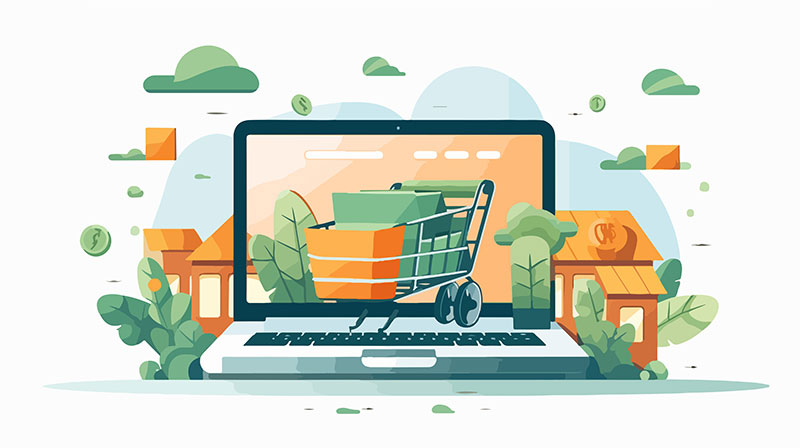
- Shopify: An easy-to-use platform that allows the rapid creation of online stores. It has many plugins and customisation options, but charges a monthly subscription and sales commissions.
- BigCommerce: Ideal for larger businesses as it provides integrated tools for inventory and order management. However, it is more expensive and not as flexible for small stores.
- Wix: Very simple to use and ideal for small businesses that want to create a site quickly without a lot of technical knowledge. But it doesn't have the same flexibility for large businesses or more specialized needs.
- Magento: It is a more professional solution for large e-shops with huge potential. But it requires technical knowledge or cooperation with programmers and has increased maintenance costs.
- WooCommerce: It is one of the most popular and flexible platforms, which runs on WordPress. It is ideal for those who want total control over the construction and management of their e-shop, without the monthly subscriptions of other platforms.
Why choose WooCommerce
WooCommerce is the best solution for beginners with a low budget, as it is free of charge and extremely flexible. If you already have a WordPress site, you can easily integrate WooCommerce and add plugins to increase your store's capabilities. With WooCommerce you can:
- Personalise every aspect of your e-shop without restrictions.
- Add various extensions to support payments, shipments, and marketing tools.
- Handle SEO and speed, since WordPress is search engine friendly.
In addition, WooCommerce is very cost-effective. Unlike Shopify or BigCommerce, you won't pay monthly subscriptions or sales commissions.
Step 3: Building the Email List
The Importance of Email Marketing
Email marketing remains one of the most powerful ways to keep in touch with your customers and increase your sales. Unlike social media, where you only control a small portion of the interaction, with email marketing you have direct access to your audience. In addition, email marketing offers an extremely high return on investment (ROI), as you can reach thousands of customers at minimal cost.
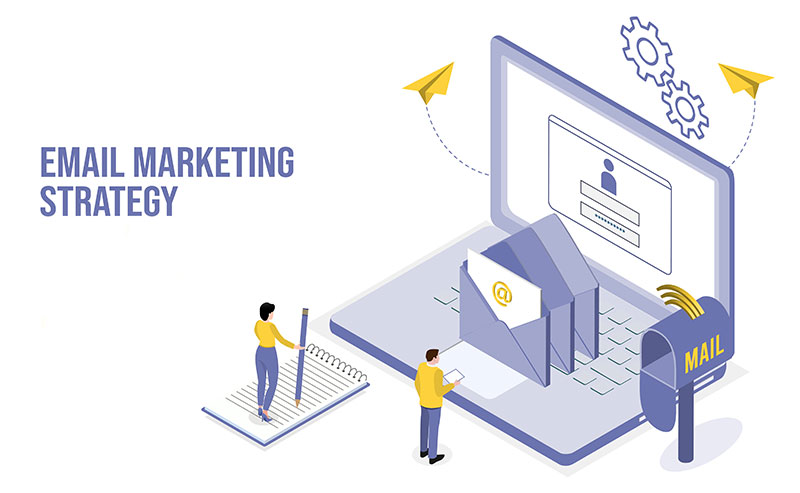
Create an Email list
To build your list, you can use several strategies:
- Offer free content (e.g., eBooks, guides, or discounts) to encourage visitors to sign up.
- Create pop-up forms in your e-shop that offer a small discount for a first purchase.
- Email collection via social media or during advertising campaigns.
The Top 5 Email Marketing Platforms
There are many email marketing platforms that can help you organize and manage your list. The top options are:
- MailChimp: Ideal for beginners with a short list. Offers simple tools and templates, but with limited segmenting and automation capabilities.
- Sendinblue: Economic solution that includes SMS marketing. However, automation tools are more limited compared to other platforms.
- constant contact: Ideal for small businesses, with easy contact and campaign management.
- ActiveCampaign: It provides powerful tools for automation and segmentation, but can be complicated for beginners.
- Klaviyo: Specialized in integrating with e-commerce platforms such as WooCommerce and Shopify, making it ideal for stores that want to use customer data for personalized campaigns.
Why choose Klaviyo
Klaviyo stands out from competition due to the focus on e-commerce. With the deep integration it offers with WooCommerce, you can:
- You target with precision your customers based on their behaviour (e.g., abandoned shopping carts, previous purchases).
- You create automated campaigns that send emails based on specific customer actions.
- Monitor in depth the ROI of each email campaign, allowing you to adjust your strategy in real time.
Email marketing automation
And of course, the ideal would be to go to a certified partner Klaviyo so you can be sure that you will receive the services you deserve.
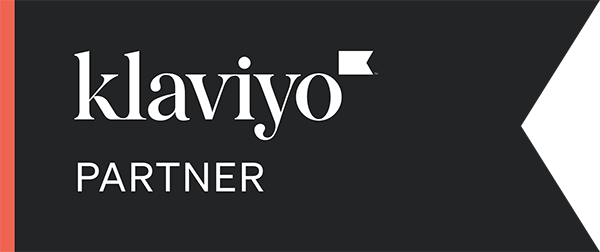
Step 4: Digital marketing strategies
Marketing is the pillar that underpins the success of any e-shop. Without a well-planned strategy, even the highest quality products may not find their audience. Let's take an in-depth look at the most effective digital marketing tactics that will boost your store.
SEO (Search Engine Optimization)
SEO is a long-term investment that can carry organic traffic to your store without paying for advertisements. To achieve this, you need to work on three key areas:
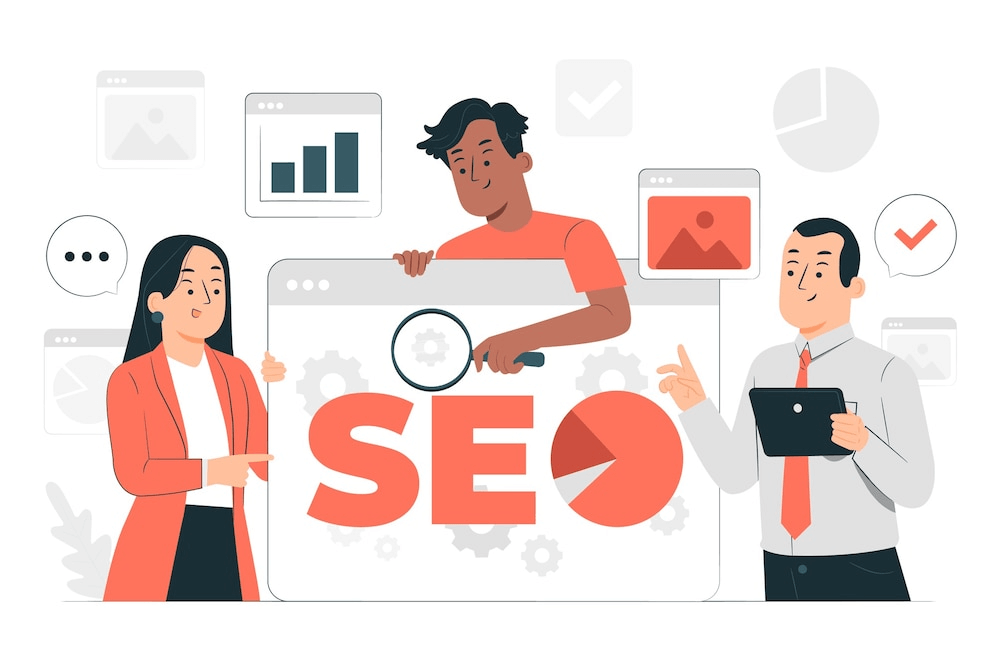
- Keywords: Do research to find out what words people use to search for your products. Use tools like Google Keyword Planner and Ahrefs to identify words with high demand and low competition.
- Content: Write content that answers your customers' questions. Product guides, comparison articles and reviews are very important to boost your presence in search engines.
- Technical SEO: Ensure that your site is Quick, search engine friendly, and has proper structure. Use tools like Google PageSpeed Insights to improve loading speed and user experience.
social media marketing
The social networks is a powerful way to build brand awareness and interact with your customers. However, you need to have a strategy:

- Instagram and Facebook: Focus on visual content and create posts that present your products in an attractive way. Partnerships with influencers can help you reach new customers.
- TikTok: TikTok has emerged as a leading platform for small brands that want to go viral. Create authentic content that matches the platform's culture.
- LinkedIn: If you sell B2B products or services, LinkedIn is ideal for targeting professionals.
PPC (Pay-Per-Click) advertising
The PPC ads allow you to target specific audiences and bring direct traffic to your e-shop. If you have a low budget, you can start small and increase your budget as you see results.

- Google Ads: Google Ads can bring you immediate results as they appear to users who are already searching for your products. You can target either specific keywords or remarketing.
- Meta Ads: These ads are ideal for reaching an audience that may be interested in your products but don't know you yet.
Legal and tax requirements for online businesses in Greece
Legal registration of your business
To legally operate an e-business in Greece, you must register your business as a legal entity. This involves the following steps:

- Issuance of VAT and ID number: You must have a Tax Identification Number (TIN) and be registered in a specific category of activity (ID).
- Registration with the Tax Office: The registration of your business in TAXISnet is mandatory for submitting tax returns and issuing invoices.
- VAT (Value Added Tax): Businesses engaged in the sale of goods are obliged to register for VAT and pay the tax on their sales.
Tax liabilities
In Greece, businesses are required to submit tax returns at regular intervals, depending on the type of company. This includes the VAT return, but also the income tax at the end of each year. Small businesses can benefit from tax breaks, but it is important to work with an accountant who understands the Greek tax system.
Budget: how much you need to get started
On a low budget
For a business with a low budget, you can start with the following costs:

- Domain and Hosting: Approximately 50-100€ per year.
- WooCommerce and basic pluginsFree, with a choice of paid add-ons (20-50€/plugin).
- Marketing: An initial budget for advertising can start from 100-200€ per month.
- Accounting servicesApproximately 50-100€ per month to monitor your finances.
Larger budget
If you have more capital, you can invest in:
- Premium themes and plugins to improve the user experience in your e-shop.
- Automated marketing tools to improve your strategy.
- Larger budget for advertising so you can attract more customers faster.
- Cooperation with qualified professionals in the field of advertising.
This guide covers all the necessary steps to start a successful online business. I hope it will help you to take your first step towards success. If you have any questions, don't hesitate to contact us. We are here to help.


